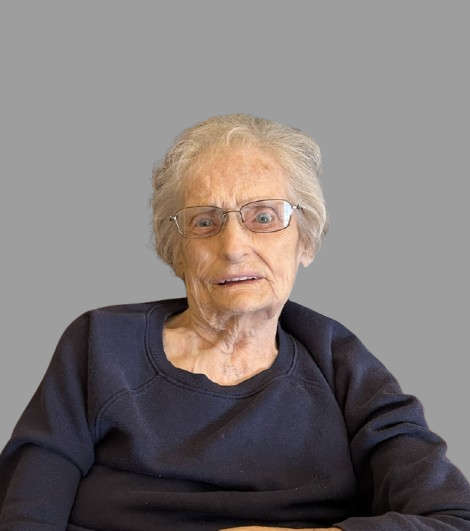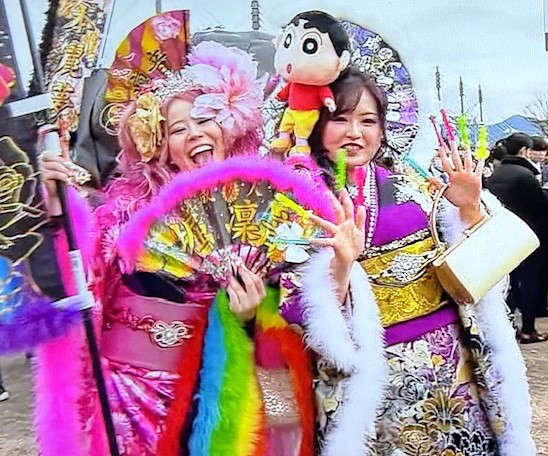
Monday was “Seijin no Hi” (Coming of Age Day) in Japan and this year it celebrated all the young people who turned 20 years old, the age of official adulthood in Japan, between April 2 of the previous year and April 1 of the current year.
This is a national public holiday and is celebrated on the second Monday of January to give everyone a three-day weekend.
Most local communities have official ceremonies where all the eligible young people in their city of residence gather to attend celebrations sponsored by their hometowns and cities in order to listen to speeches and well-wishes by community leaders. Afterward, they are feted to an after-party where they can drink and eat with their friends.
The second after party is usually made up of smaller groups of friends from their junior high school or high school days where they continue celebrating until the wee hours of the morning.
Legally, however, since 2018, the age of adulthood was officially set at 18 years of age. So, while legally young people are adults at the age of 18, tradition and custom still considered the official Seijin no Hi ceremony as the real event that heralds in official adulthood for Japanese young people, regarding them as full-fledged adults.
While young people can legally vote at the age of 18, as well as be free from parental control, and be eligible to get a driver’s license for cars and trucks (motorcycle licenses are available from the age of 16), they still must wait until they are 20 to be able to smoke and drink alcohol legally.
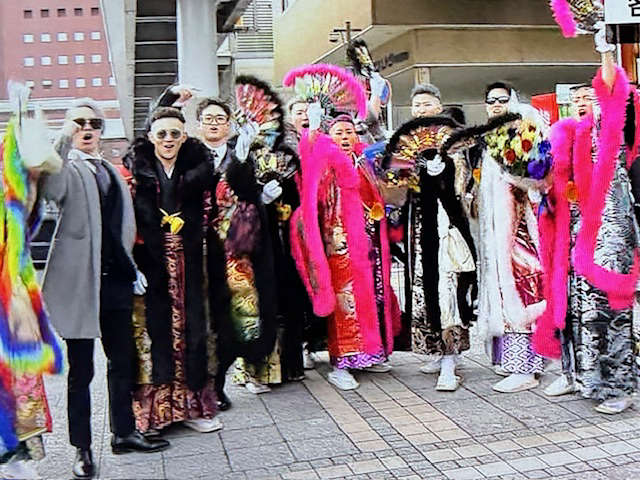
I have written about this celebration before, but in this column, I want to focus on the rather unique event that takes place near where I live in Japan, in Kitakyushu. Normally, all around Japan young women and men don lovely and traditional kimonos or formal business suits — in other words, classically and elegantly styled apparel. But in Kitakyushu, it is common for the new adults to wear some rather bright and garish apparel selections that do not fall into the categories of demure, classic or traditional.
The normally understated and beautifully designed pure silk kimonos are exchanged for very outlandish and crazy choices that seem to be an earnest attempt to try and outdo the other attendees by incorporating unusual and unique accessories to make them stand out even more so. Perhaps it is just a last “hurrah” for them to be rebellious as they finish their childhood and enter into adulthood, where they will be forced to toe the line when they begin working in companies by being forced to adhere to a very prescribed and expected dress code that is normally more subdued and plainer in appearance.

In fact, businessmen and businesswomen tend to wear uniforms in the way of dark suits to work in offices, even though it is not an official uniform, it is what they are likely most comfortable wearing in order to blend into the office culture and atmosphere of their workplaces. I personally think this tendency to wear non-descript dark suits is a holdover from their school days when for at least six years they were forced to wear school uniforms and these uniforms are what they became accustomed to wearing, so a dark suit at the office seems normal and regular to them.
In Kitakyushu, for the Coming-of-Age celebration, many groups of friends will even coordinate their outfits to be matching or to follow a certain theme. Individuals will also go all out with some rather interesting choices that include boas, large shoulder affectations, and matching outerwear that is warm and often fuzzy to keep them toasty during the events, as Japan can be quite cold in January — even in northern Kyushu.
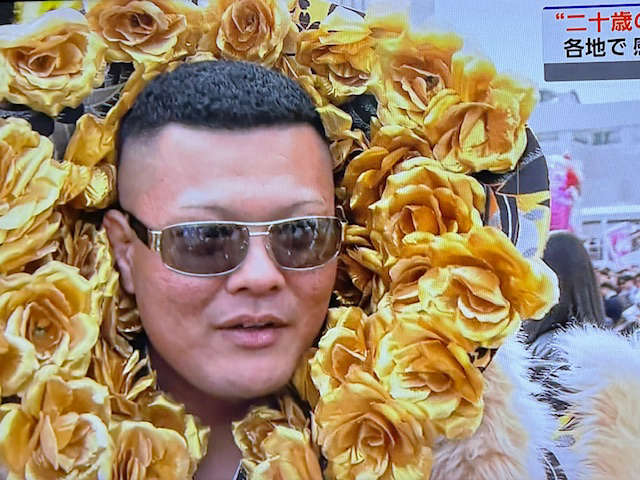
Some males will forego the fancy and elaborate kimonos and opt to wear a flashy Western-style suit and combine it with an oversized fur coat — still eye-catching and out of the ordinary. I have seen boys wearing pink pastels, animal prints, and garish plaid suits for the occasion. Not your typical “interviewing” suit that they will be required to wear when job hunting.
Another interesting custom or trend for some of the boys is to wear their hair in huge pompadour-style hairdos, often colored in some sort of design like a tiger or zebra, etc. I have read that these styles were inspired originally by “bosozoku” (biker gangs), and from what I remember from the late 1970s living in Tokyo and visiting the Harajuku area, these types were referred to as “Yankee” delinquents who loved to push the envelope with their parents and society with really rebellious choices in clothing and hairstyles.
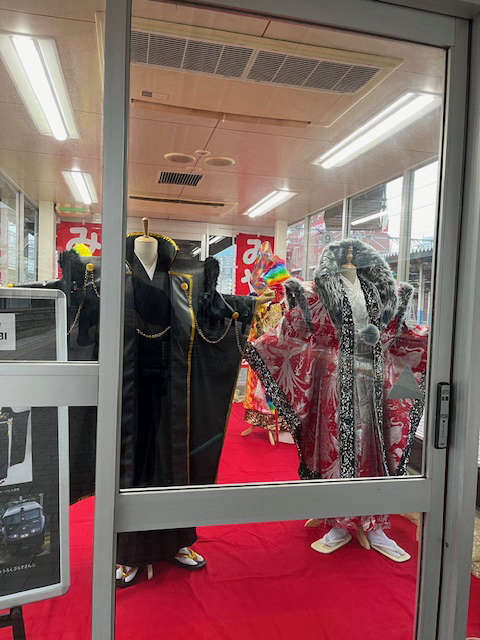
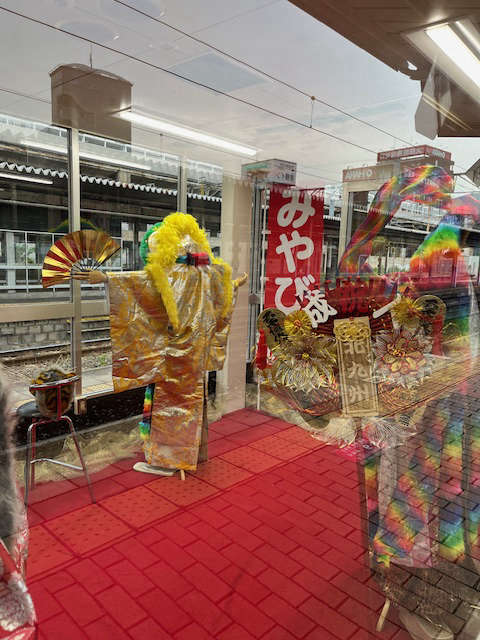
There is a store in Kitakyushu called Miyabi that specializes in these unusual kimonos, and they always have a huge display on the train platform at Kokura station (see photos). Many young people take trains, so it is a brilliant idea to rent the space to show their wares to everyone waiting to board the train.
In September of 2023, the store was invited to show some of its wild-looking kimonos during New York Fashion week. No doubt, most older people would prefer that the young people choose more traditional kimonos for such an important milestone event in the kids’ lives, but this custom is one that is widely done, and I doubt if it will return to the normalcy seen around most of Japan anytime soon.
Like it or not, it certainly brings worldwide attention to Kitakyushu every year, so it is one of those things that is just tolerated and accepted by the citizens, and it is the last chance for most of these young people to be able to act out in such a way before buckling down to do adulting for real.
The Shelby County Post is a digital newspaper producing news, sports, obituaries and more without a pay wall or subscription needed.


 Rep. Greene recognized for Statehouse efforts by autism advocacy groups
Rep. Greene recognized for Statehouse efforts by autism advocacy groups
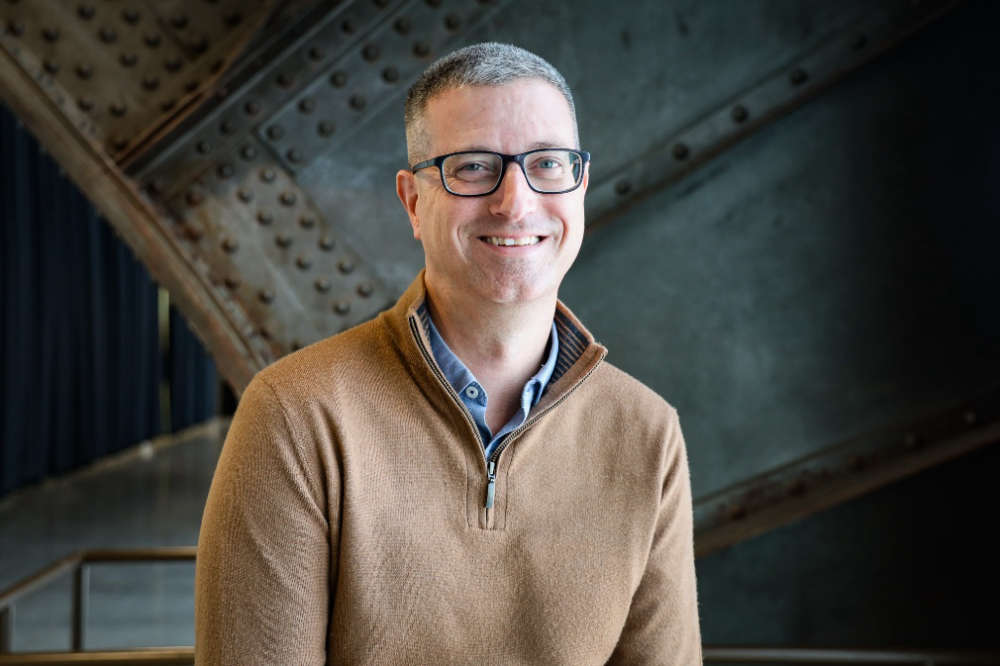 Ray Allison named next executive director of the Indiana State Fair Commission
Ray Allison named next executive director of the Indiana State Fair Commission
 Another record-breaking season at Horseshoe Indianapolis
Another record-breaking season at Horseshoe Indianapolis
 INvestABLE Indiana announces expanded eligibility criteria beginning January 1
INvestABLE Indiana announces expanded eligibility criteria beginning January 1
 Governor Braun announces record year for Indiana tourism
Governor Braun announces record year for Indiana tourism
 Indiana's state parks offer New Years Day events
Indiana's state parks offer New Years Day events
 Indiana casinos see revenue dip in November
Indiana casinos see revenue dip in November
 City interested in purchasing land for second downtown parking garage
City interested in purchasing land for second downtown parking garage


